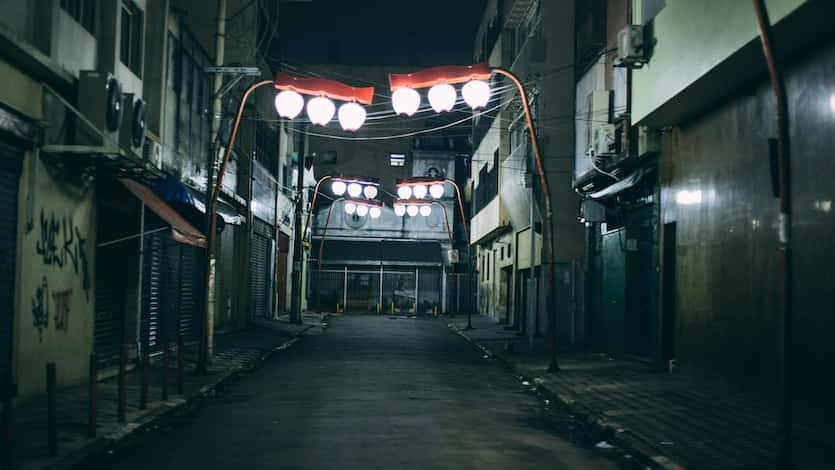In our blog looking at different filming times and locations relative to lighting needs, we started with the easiest two setups, which are day exteriors and night interiors. The ease of lighting in different situations arises because of the sun’s powerful light (day exteriors) or the lack of competition with two light sources (night interiors, where no sun shines through windows). In the case of the two more difficult filming situations, day interiors are a competition between an overwhelmingly powerful and often tough to control light (the sun) and weaker interior lighting. Meanwhile, night exteriors are challenging because of a total lack of free light, either from the sun or from inside lighting sources, meaning expensive electrical and lighting requirements.
Day Interior
The next filming situation is daytime interiors, which are the most common in corporate video work. In technical terms, the color temperature of the sun is somewhere around 5600 degrees Kelvin (though it varies depending on time of day and atmospheric conditions), but the color temperature of indoor lighting is generally between 2500 and 4000 degrees Kelvin, depending on whether it’s tungsten (3200 K), fluorescent office lighting (4000 K), or LED lighting (which varies). The bottom line is mixing color temperatures produces odd results and not usually very flattering ones. If you have cold blue light mixing with warm yellow light, you have a disastrous image that cannot be balanced in the camera.
A videographer also cannot expose for both outdoors and indoors, so when you expose for indoors with a clear window, you will see the window appears blown out, but if you expose for the outdoors, the entire room appears dark (even if all of the lights are on). The human eye has the ability to expose simultaneously for both sources of light, which is why what you see with your naked eye is not the same as what the camera sees. In photography, you can shoot a bunch of photos in the same spot at different exposures and then combine the results into one beautiful photo that’s perfectly exposed for all elements of the image. Unfortunately, filmmaking has no such easy workaround.
In the case of filming daytime interiors, the key is blocking out the sun from interfering with interior lighting setups. Drapery is ideal, but not always a possibility. The best options are to avoid filming against windows or into the direction of windows wherever possible. Otherwise, accepting partially blown out windows is part of the joys of low budget filmmaking. For curious readers, you’re probably wondering why Hollywood movies are able to show a perfectly lit interior and show a perfectly visible exterior through the window. When you see such a deceptively simple shot, what you’re actually seeing is an extremely aggressively lit shot where the lighting department has blasted enough light into the interior to match with the intensity of the sunlight coming in through the window.
Competing with the sun requires immense electrical and lighting department muscle. Another cheat would be to green screen the open window, blocking out the sunlight entirely (or if done in a studio, there would be no sun anyway), then use chroma keying to remove the green screen and replace it with something called a plate. In basic English, you’re replacing the green screen with other footage of whatever you want the viewer to see outside of the window. When done properly, nobody will know the green screen was ever there; they’ll just think they’re seeing out the open window. Of course, filming green screen work has its own challenges and costs.
Night Exterior
The most difficult type of filming to achieve well is exterior nighttime footage, primarily because most cameras don’t function as well in darkness as they do in daylight. With little ambient light, detail is lost and the image looks “grainy” on most cameras without adding additional light. Of course, because the location is outside, any lighting needs to be fairly powerful or at least close to the actors to achieve the desired results. In a small room, a small light can illuminate the entire space, but outdoors the light dissipates.
The situation is complicated further by the need for a large amount of electricity to power the large lighting setup, which means renting a generator truck. If any of the actors are moving (like walking down the street, for instance), the need for lighting increases exponentially, which in turn increases the need for a massive crew to deal with a massive lighting setup, large electrical needs, and complicated setups like dolly or steadicam shots. On a small budget, a filmmaker could rent a camera that performs extremely well in low light conditions, but the result will still be noticeably amateur compared to Hollywood productions. In short, wherever possible, avoid filming exteriors at night unless you want subpar results or a massive production budget.
In many cases, companies cannot avoid when or where they need to film, because the needs of the product or service come first. Nonetheless, having an idea about complexity helps clients understand the potential costs involved. We had a potential client that wanted outdoor night filming of colorful pool lights, which makes perfect sense for the product, but requires special attention to make the footage look great. Ultimately, the best advice for a smooth shoot is to budget a location scout into the project so that the videographer can at least look at the filming locations in advance. Having an idea what challenges he faces, he will be able to prepare better for the day and make the footage shine.

